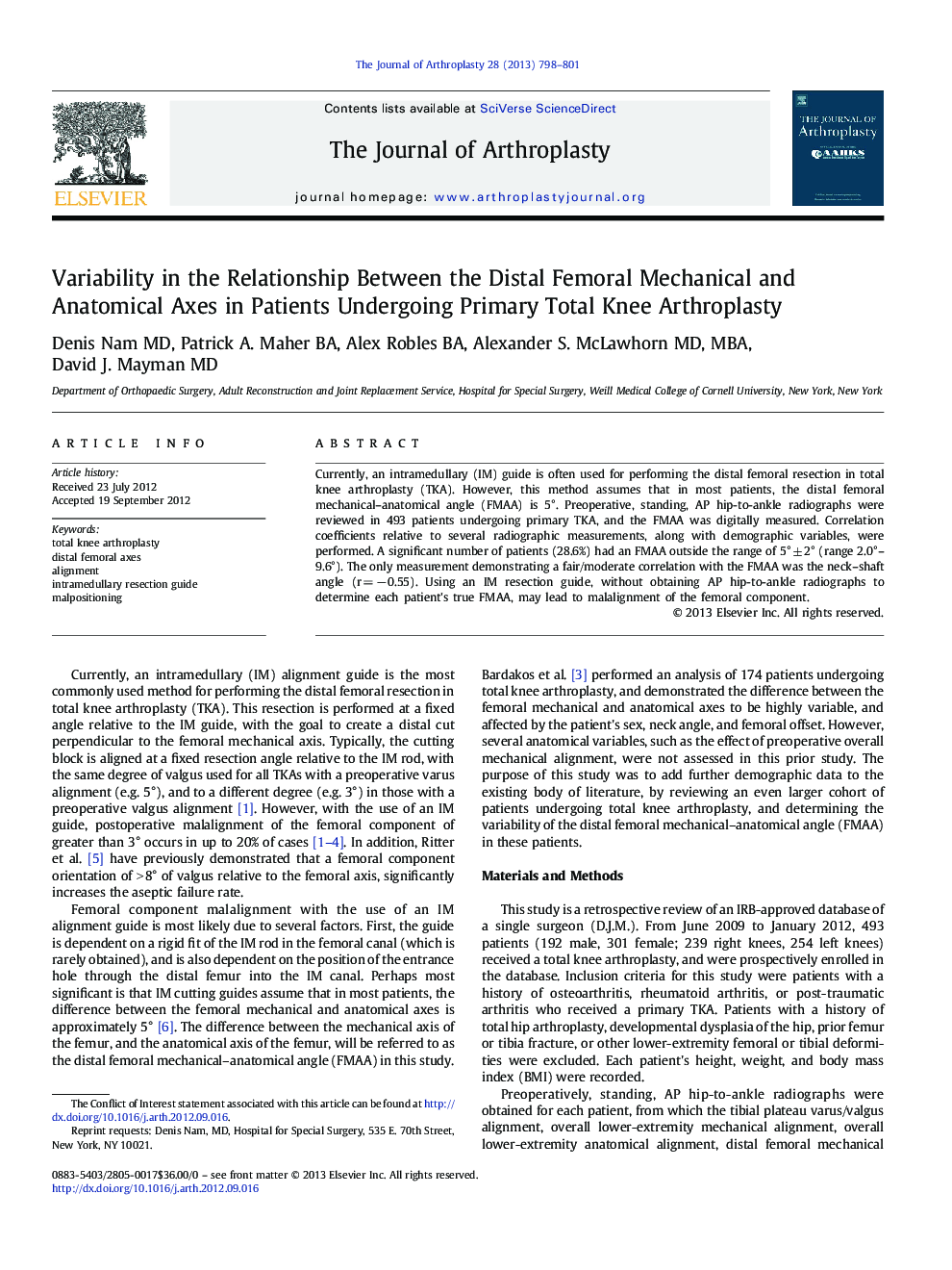| Article ID | Journal | Published Year | Pages | File Type |
|---|---|---|---|---|
| 4061541 | The Journal of Arthroplasty | 2013 | 4 Pages |
Currently, an intramedullary (IM) guide is often used for performing the distal femoral resection in total knee arthroplasty (TKA). However, this method assumes that in most patients, the distal femoral mechanical–anatomical angle (FMAA) is 5°. Preoperative, standing, AP hip-to-ankle radiographs were reviewed in 493 patients undergoing primary TKA, and the FMAA was digitally measured. Correlation coefficients relative to several radiographic measurements, along with demographic variables, were performed. A significant number of patients (28.6%) had an FMAA outside the range of 5° ± 2° (range 2.0°–9.6°). The only measurement demonstrating a fair/moderate correlation with the FMAA was the neck–shaft angle (r = − 0.55). Using an IM resection guide, without obtaining AP hip-to-ankle radiographs to determine each patient's true FMAA, may lead to malalignment of the femoral component.
